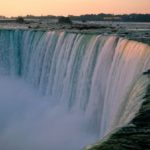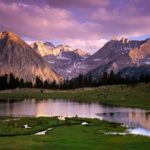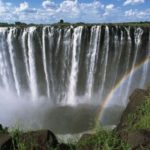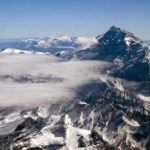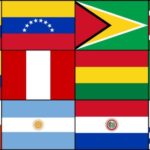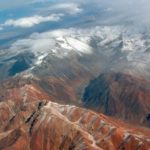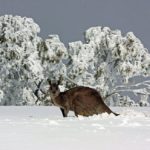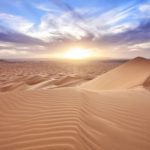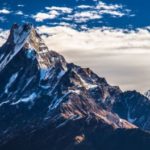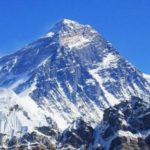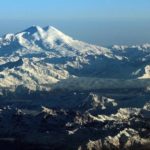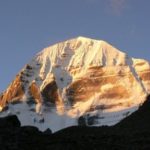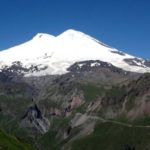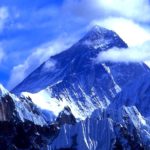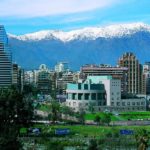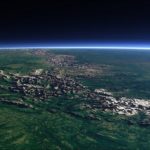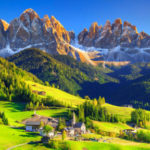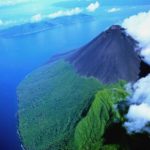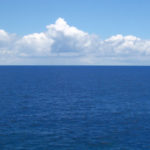Angel Falls
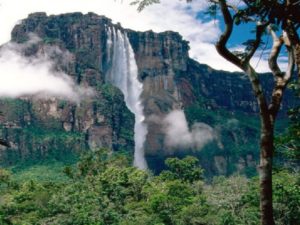 The wild tropical land of Venezuela hid the highest waterfall on the planet, Angel, in its depths. He plunges from an incredibly huge height of 979 meters from the top of the largest in all of South America table mountain – Auyantepui. This name was given to the locals by the grief because of its power and height, in Russian it sounds like “Devil’s Mountain. It is surprising that Angel Falls on such a high mountain could only be found in the 20th century.
The wild tropical land of Venezuela hid the highest waterfall on the planet, Angel, in its depths. He plunges from an incredibly huge height of 979 meters from the top of the largest in all of South America table mountain – Auyantepui. This name was given to the locals by the grief because of its power and height, in Russian it sounds like “Devil’s Mountain. It is surprising that Angel Falls on such a high mountain could only be found in the 20th century.
Water continually falls from a great height and, before reaching the ground, it is sprayed into tiny droplets, forming a cloud of fog covering Auyantepui.
The opening of the waterfall was pure coincidence. James Angel, a United States pilot in 1933, during the heyday of diamond rush, flew around the tepui in search of ore, and came across the roaring call of a waterfall. Hence its name – in the Spanish dialect Angel is read as Angel. Mount Ayuantepui, and accordingly Angel Falls, are located on the territory of the famous Canaima National Park, which in 1994 received the status of Human Heritage.
This park is the second largest in the country. And its main attractions are the Table Mountains – flat-topped mountains, which instilled mystical fear into the souls of local residents, Indians, who believed that the tops of the tepui serve as a haven for “Mawari — the spirit of the mountains. The Indians kept the secret of the great tepui, honored their solitude, and the falling icy waters of the Angel Falls in their own way called Churum, the measure. “The waterfall is the deepest place, and this is how the translation from the Pemon language sounds and the tepui themselves are located in very difficult terrain, they can only be reached by air or river.
The town of Canaima, the heart of the park, holds not only Angel Falls. Around him rise noisy smaller, but no less picturesque, waterfalls – Salto-Ukaim, – Guadim, – Acha, -Galondrina and two very small ones – Salto el Sapo and Salto el Sapito. Here is the incredibly colorful Laguna de Canaima (also, check Interesting facts about Victoria).
Venezuela, one of the few countries that have such a diverse terrain. Here and mountainous areas, and tropical steppe – lionos, and highlands, covered with equatorial forests. In the north-west of the country, mountainous terrain girdled the magnificent beauty of Lake Maracaibo – the most extensive lake in South America.
It is believed that this is one of the oldest lakes on earth. Unfortunately, every year it becomes smaller. Little Venice is famous for its savannas – vast plains with high grass. In the rainy season, when rivers overflow, the savannah drowns in water, and in the dry season the grass dries out, the trees lose their foliage.
Venezuela owns a hilly terrain all rugged by fast rivers – the Guiana Highlands, covered with equatorial forests. The largest river is the Orinoco. Almost 50 percent of all the country’s rivers and streams, originating in the Andes and the Guiana Highlands, flow into Orinoco. The country is located in the subequatorial climate zone, which affects the flora and fauna of the country. The forests of Venezuela have up to 600 species of trees and are famous for their obstruction and lianas.
From the south, the Guiana Plateau is a vast expanse of unrealistically mixed mountains. This section of the highlands – the plateau of Roraima, is considered the center of the Earth among the locals – the Indians. According to mythology, the ancestor of the human race lives here – the goddess Quinn. And the plateau itself got its name from the highest mountain located on it – Mount Roraima. Here, on the plateau, the mountain Cerro Sarizarinam also grew, on top of which a large canyon formed. Her story is also entertaining – “a sari – a sari is a sound that, according to local residents, is made by a demon who lives in grief and feeds on people. The plateau is dotted with mountains, each of which keeps its mythological history.

